Installing a Ground Fault Circuit Interrupter (GFCI) outlet with four wires offers exceptional electrical shock protection, especially in areas where water and electricity may come into close proximity. This comprehensive guide will carefully walk you through each step of the installation process, ensuring a safe and secure setup of your GFCI outlet. It is important to note that working with electrical wiring carries inherent risks. If you are uncertain or uncomfortable with the process, it is highly recommended to seek professional assistance.
What is a GFCI Outlet?
A Ground Fault Circuit Interrupter (GFCI) outlet is a safety device that monitors the flow of electricity in a circuit. Its purpose is to protect you from potential harm caused by disruptions in the electrical flow, such as water entering the circuit. In the event of such a disruption, the GFCI outlet will automatically shut off the power, preventing any shocks or injuries. Installing a GFCI outlet with four wires is a relatively simple process, but it is important to first turn off the power at the circuit breaker before beginning.
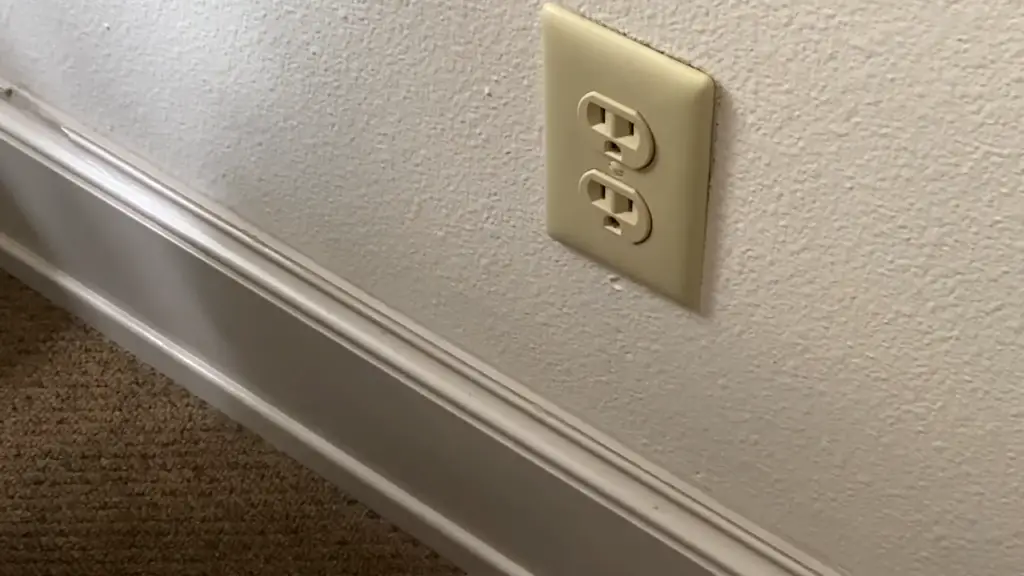
Why Should You Install a GFCI Outlet With 4 Wires?
GFCI outlets with four wires offer an additional layer of safety and protection, surpassing the standard two-wire outlets in security. By having four wires, the ground fault circuit interrupter is able to identify any disruption in the flow of electricity, whether it be from a fault in the wiring or something like water getting into an electrical socket. This can help protect you from shock or other injury.
What You Need to Install a GFCI Outlet With 4 Wires?
Before you start installing a GFCI outlet with four wires, it’s important to gather the necessary materials and tools. Here’s what you’ll need:
- A GFCI outlet which is rated for your type of circuit (15 amp or 20 amp).
- Wire connectors.
- Electrical tape.
- Screwdriver.
- Needle nose pliers.
- Voltage tester. [1]
Wiring the GFCI Outlet
Before starting the installation process of wiring a GFCI outlet with four wires, it is crucial to first turn off the power at the circuit breaker. Once this important safety step is completed, you can proceed with the installation with confidence.
- First, connect the black wire from the electrical box to one of the two brass terminals on the GFCI outlet. The remaining brass terminal should be connected to the red wire.
- Connect the white wires from both the GFCI outlet and the electrical box together using a wire connector.
- Connect the green or bare copper ground wire from the GFCI outlet to the grounding screw of the electrical box.
- To ensure the safety of your connections, it is recommended to securely fasten them with electrical tape. This will protect against potential short circuits or accidental loosening.
- Insert the GFCI outlet into the electrical box and secure it using the provided screws.
- Activate the power at the circuit breaker and verify your work using a voltage tester to ensure smooth electricity flow and absence of any connection issues or shorts.
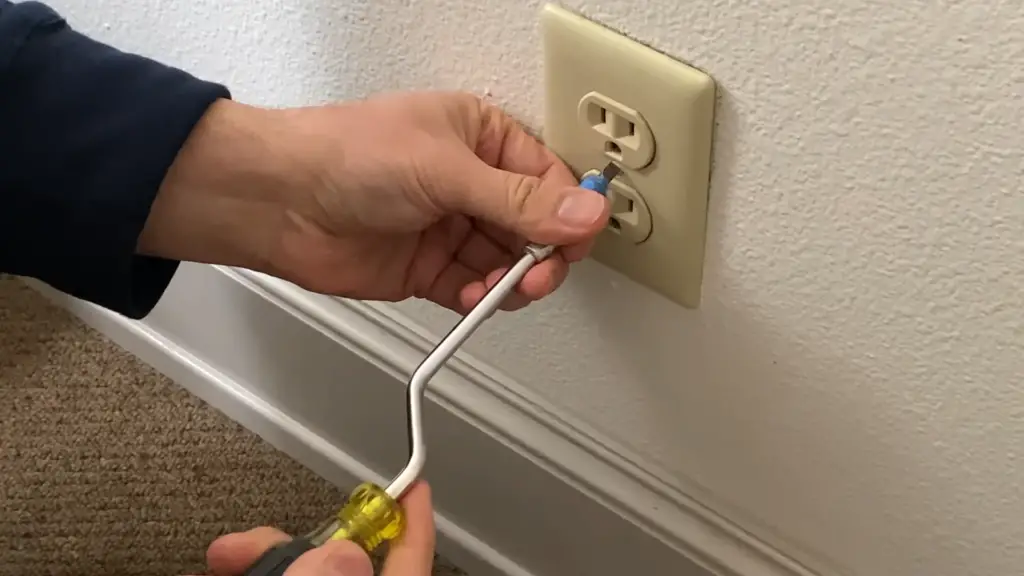
Tips For Installing a GFCI Outlet With 4 Wires
- Prior to commencing any wiring work, it is imperative to always bear in mind the necessity of switching off the power at the circuit breaker.
- Ensure that all wire connections are firmly secured and not loose or dangling.
- When installing a GFCI outlet with four wires, be sure to utilize appropriate tools such as screwdrivers and needle nose pliers.
- Before restoring power, it is crucial to meticulously examine all wiring using a voltage tester to confirm flawless functionality.
- Ensure you always wear safety glasses and protective gloves when engaging in any form of electrical work. It is crucial to prioritize your safety and well-being while working with electricity. [2]
- If you are not confident in your ability to install a GFCI outlet, it is best to contact an electrician for assistance.
Troubleshooting Your GFCI Outlet Installation
If you have followed all of the steps above and still find that your GFCI outlet is not functioning correctly, there are a few things you should check.
- Ensure that all wire connections are securely and firmly fastened.
- Ensure that the circuit breaker has been correctly turned off before beginning any wiring work.
- Check for shorts or breaks in any of the wires.
- Ensure that all connections are properly made to the designated terminals on the GFCI outlet.
How Can You Test Your GFCI Outlet?
After installing your GFCI outlet, it is crucial to verify its proper functionality through testing. To accomplish this, you will require a voltage tester.
- Turn off the power at the circuit breaker and plug in the voltage tester into the GFCI outlet.
- Turn on the power at the circuit breaker and press the test button on the GFCI outlet.
- If the tester shows voltage, then your GFCI outlet is functioning correctly and you can unplug the tester.
- If there is no voltage displayed on the tester, then you may have a problem with your installation that needs to be addressed.
By following the aforementioned steps, you can ensure that your GFCI outlet is functioning correctly and safeguarding you against potential electrical shocks.

Safety Considerations for Installing a GFCI Outlet
It is important to keep safety in mind when installing a GFCI outlet. Always make sure that the power source has been turned off at the circuit breaker before attempting any wiring work. Make sure that all wire connections are secure and not loose or hanging. Wear safety glasses and protective gloves when performing any type of electrical work, and always test your work with a voltage tester before turning the power back on. If you are not confident in your ability to install a GFCI outlet, contact a professional electrician for assistance.
Can You Hook Up A GFCI Without A Ground Wire?
No, it is not safe to hook up a GFCI without a ground wire. GFCI outlets are designed to protect people from the dangers of electric shock. Without the grounding wire they cannot perform their job correctly and may put you in danger if there are ever any problems with your wiring.
If you don’t have access to a ground wire, you should install a GFCI with only three wires. This configuration will still provide the protection of a GFCI outlet and can be done safely as long as the circuit is properly wired.
There are several types of GFCI outlet available, so make sure to choose one that is rated for 3-wire installations. Additionally, it’s important to follow the manufacturer’s instructions when wiring a GFCI with three wires.
It’s also important to note that even if you install a GFCI outlet without a ground wire, it will not be able to provide any protection from other hazards such as lighting strikes or power surges. If you live in an area prone to these types of electrical dangers, you should consider adding a whole-house surge protector to your electrical system. This device is installed at the main panel and provides protection against dangerous power surges throughout the entire home.
Finally, if you are not comfortable or familiar with performing electrical work, it’s always best to call an electrician for help. Professional electricians will have the expertise and tools needed to safely install your GFCI outlet. [4]
What Is The Difference Between A GFI Outlet And A GFCI Outlet?
A GFI outlet is an older type of outlet that is sometimes referred to as a “Ground Fault Circuit Interrupter.” While they provide some protection from electric shock, they are not designed to protect against the same types of dangers as a GFCI outlet.
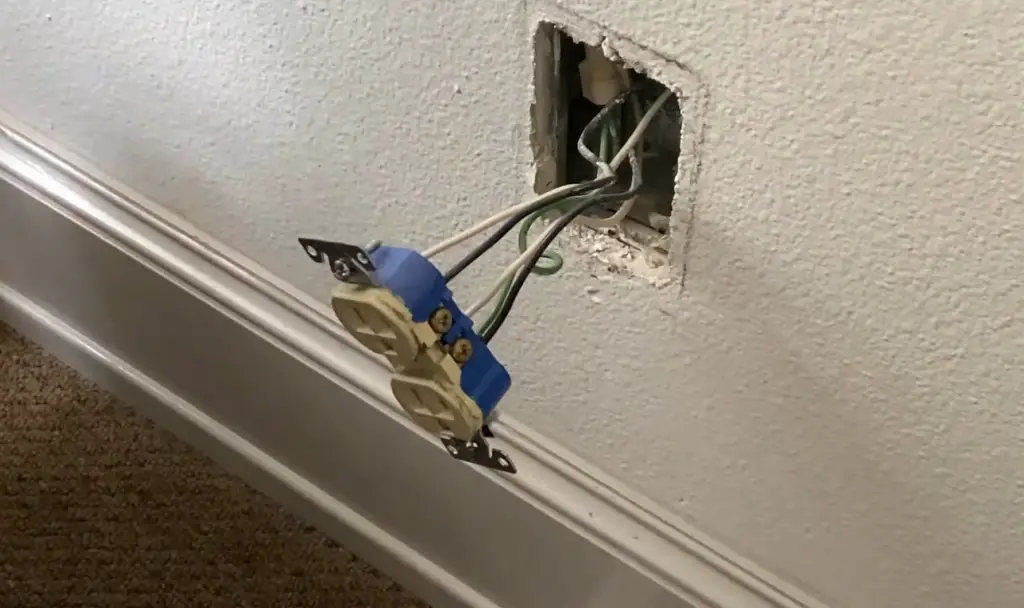
GFCI outlets are much more advanced and provide superior protection by monitoring for changes in current flow. If they detect a problem, the GFCI will automatically trip and shut off power to the circuit.
Additionally, GFCIs are now required by law in many areas for use in bathrooms, kitchens, outdoor outlets, and other locations where people could be exposed to water or electricity at the same time. For this reason, it’s important to make sure you replace any GFI outlets with GFCIs when possible.
In summary, GFCIs are a much safer option than older GFIs and should be used anywhere there is potential for electric shock or water exposure. If you ever have any questions or doubts about your electrical system, it’s always best to consult an electrician for help. [5]
What Are The 3 Types Of GFCI?
There are three types of GFCI outlets: self-test, lockable, and tamper resistant.
Self-Test GFCI Outlets – Self-test GFCI outlets are the most common type of GFCI outlet used in residential applications. They have a “self-test” button on them which allows you to test the outlet and see if it’s working correctly.
Lockable GFCI Outlets – Lockable GFCI outlets are much less common than self-test GFCIs, but they offer a bit more protection against tampering. The lockable type has a latch that can be locked with a key or other locking device so that the outlet can’t be tampered with.
Tamper Resistant GFCI Outlets – Tamper resistant GFCI outlets are the most secure type of outlet available. They have a special spring-loaded door that will only open when pressure is applied to both sides at the same time. This makes it extremely difficult for small objects or hands to slip inside and tamper with the outlet.
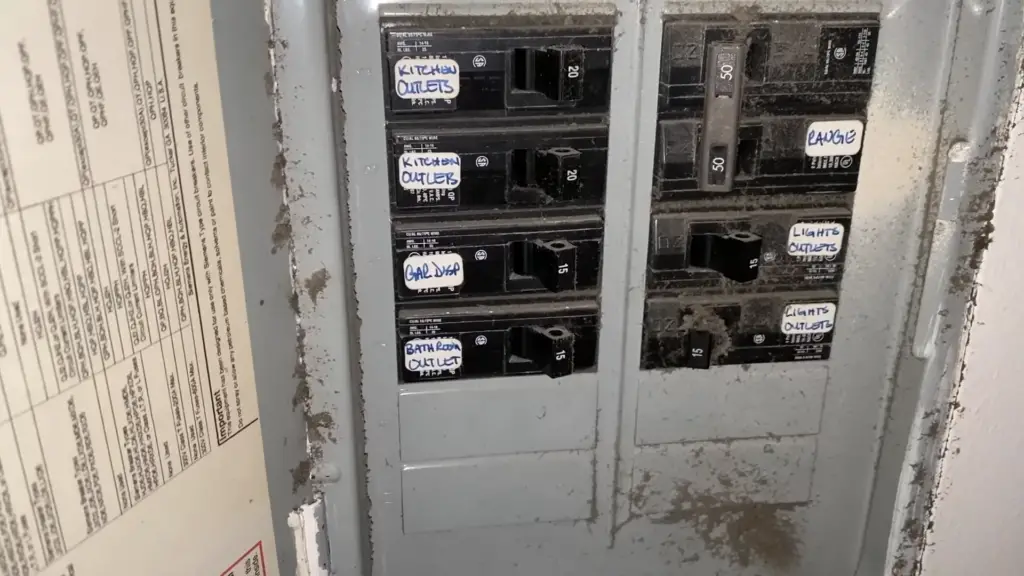
How Do I Know If My Outlet Is GFCI Or AFCI?
It is important to make sure that you have the right type of outlet for your application. GFCI and AFCI outlets look very similar, but they provide different levels of protection. The best way to identify whether an outlet is GFCI or AFCI is by looking at the labels on the device itself. GFCIs are identifiable by their round reset buttons, while AFCIs are identifiable by their hexagon-shaped reset buttons. Additionally, GFCIs will feature a label that says “GFCI Protected”, while AFCIs will feature the label “AFCI Protected”. If there is no label on the device, you can also refer to your home’s wiring diagram or installation manual to identify the outlet.
If you are still uncertain about whether your outlet is GFCI or AFCI, it may be best to contact a qualified electrician for further assistance. This will help ensure that your home’s wiring is properly and safely installed. Moreover, an electrician can also advise you on the most appropriate type of outlet for your particular application. For more information on outlets and home wiring, you can also refer to the National Electrical Code or consult a local electrical inspector.
What Are The Advantages of Installing GFCI Outlets?
GFCI outlets provide an extra layer of protection against potential electric shock hazards, which can be especially beneficial in areas that are prone to wet conditions or areas where children are present. Not only do GFCI outlets protect against shocks and electrocution, but they can also help to prevent electrical fires by tripping the circuit when an overload is detected.
Overall, GFCI outlets are a great addition to any home as they provide added safety and peace of mind for homeowners. They are relatively easy to install and they can help ensure that your home’s electrical system is up to code. With the extra protection provided by GFCI outlets, you can rest assured that your family will be safe from potential shocks or fires. To learn more about GFCIs, consult a local electrician or refer to your home’s wiring diagram. [6]
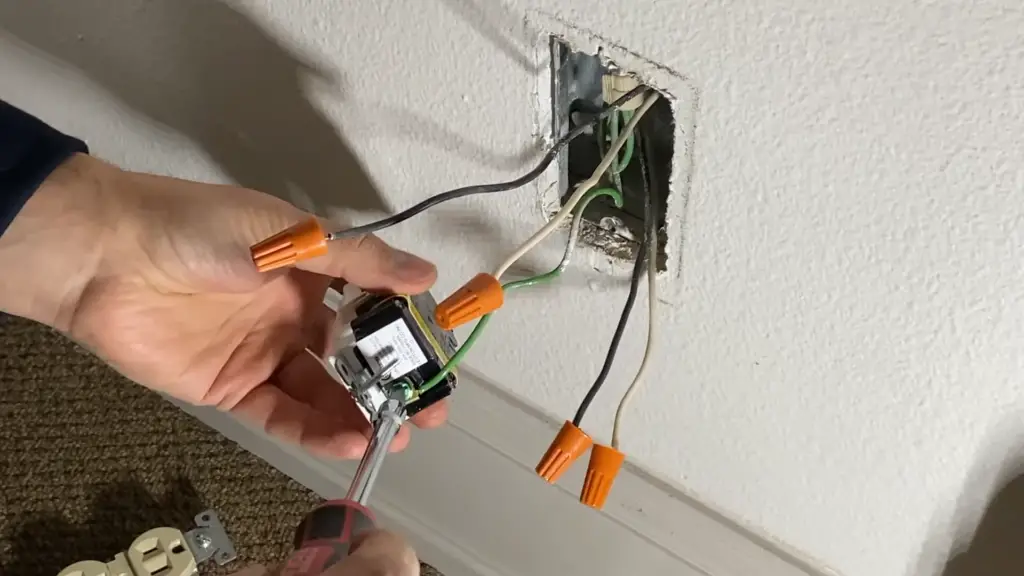
Can An Outlet Be Both AFCI And GFCI?
Yes, an outlet can be both AFCI and GFCI. These dual-function outlets provide the most comprehensive protection against potential electrical hazards. They have both a hexagon reset button to protect against arcs and a round reset button to protect against shocks. Installing these dual-function outlets is highly recommended in areas where children are present or where there is increased risk of electrical shock, such as in bathrooms or kitchens.
It is important to note that AFCI and GFCI outlets are not the same thing, so it is important to make sure you install the right type of outlet for your application. AFCIs help protect against arcs, while GFCIs help protect against electric shock. Both types of protection are essential in keeping your home safe from potential electrical hazards.
When Should You Not Use AFCI?
AFCI outlets are not necessary for all applications. In fact, there are certain areas of the home that should not be equipped with AFCIs, such as unfinished basements and garages. These areas typically do not pose a risk of arcing or fire due to their non-combustible nature. Therefore, it is generally recommended that standard outlets be used in these locations.
It is also important to note that AFCI outlets should not be used with certain types of equipment, such as three-pronged plugs and two-wire systems. Additionally, if an AFCI outlet trips frequently, it may indicate that there is something wrong with the wiring in your home’s electrical system. In this case, it is recommended to contact a qualified electrician for further assistance.
Do I Need Both GFCI And AFCI?
In general, it is recommended to have both GFCI and AFCI outlets in your home. Both types of protection are essential in keeping your family safe from potential electrical hazards. While GFCIs protect against electric shock, AFCIs help protect against arcs that can lead to a fire. Therefore, it is important to make sure that all areas of the home — particularly bathrooms, kitchens, and other wet locations — are equipped with both GFCI and AFCI outlets. For more information on outlets and home wiring safety, you can consult a local electrician.
FAQs
What is a GFCI outlet?
A GFCI (ground fault circuit interrupter) outlet is a special type of electrical outlet that provides extra protection against electric shock. It features a round reset button and is designed to detect ground faults or overloads in the circuit and quickly shut off the power before an electric shock can occur.
What are the benefits of installing GFCI outlets?
GFCI outlets provide an extra layer of protection against potential electric shock hazards, which can be especially beneficial in areas that are prone to wet conditions or areas where children are present. Not only do GFCIs protect against shocks and electrocution, but they can also help to prevent electrical fires by tripping the circuit when an overload is detected.
Can an outlet be both AFCI and GFCI?
Yes, an outlet can be both AFCI and GFCI. These dual-function outlets provide the most comprehensive protection against potential electrical hazards. They have both a hexagon reset button to protect against arcs and a round reset button to protect against shocks. Installing these dual-function outlets is highly recommended in areas where children are present or where there is increased risk of electrical shock, such as in bathrooms or kitchens.
Do I need both GFCI and AFCI?
In general, it is recommended to have both GFCI and AFCI outlets in your home. Both types of protection are essential in keeping your family safe from potential electrical hazards. While GFCIs protect against electric shock, AFCIs help protect against arcs that can lead to a fire. Therefore, it is important to make sure that all areas of the home — particularly bathrooms, kitchens, and other wet locations — are equipped with both GFCI and AFCI outlets. For more information on outlets and home wiring safety, you can consult a local electrician.
Why is it important to install a GFCI outlet?
It is important to install a GFCI outlet because it provides an extra layer of safety in potentially hazardous areas. In addition to helping protect against electric shock, GFCIs can also help prevent electrical fires by tripping the circuit when an overload is detected. This makes them essential for homes that are exposed to wet conditions or areas where children are present. Installing GFCI outlets is one of the most effective ways to ensure your family’s safety from potential electrical hazards.
How do I test my GFCI outlet after installation?
To test your GFCI outlet after installation, plug a lamp or other small device into the outlet. Then press the “reset” button on the GFCI and watch for the light to come on. If it does not, there may be an issue with the wiring that needs to be looked at by a qualified electrician. Additionally, you can use a GFCI tester to ensure that your outlet is working properly and providing the necessary protection.
What should I do if my GFCI outlet trips frequently?
If your GFCI outlet trips frequently, it may indicate something wrong with the wiring in your home’s electrical system. In this case, it is recommended to contact a qualified electrician for further assistance. Faulty wiring can cause hazards such as electric shock or even electrical fires, so it’s important to address the issue as soon as possible. An experienced electrician will be able to help diagnose and fix any issues with your home’s wiring.
Are AFCI outlets necessary?
AFCI outlets are not necessary for all applications. However, they can provide extra protection against electrical arcs that can lead to a fire. Therefore, it is generally recommended that AFCI outlets be used in bedrooms and other living spaces where there is an increased risk of fire. It is important to note, however, that these outlets should not be used with certain types of equipment such as three-pronged plugs or two-pronged plugs that don’t have ground wires.
Do GFCI outlets help prevent electrocution?
Yes, GFCI outlets are an important tool for preventing electrocution in wet areas such as bathrooms and kitchens. These outlets detect any ground faults or overloads in the circuit and quickly shut off the power before an electric shock can occur. Therefore, it is highly recommended that all areas of the home where there is a risk of electric shock be equipped with GFCI outlets.
Useful Video: How to Install GFCI Outlet (4 Wires)
Conclusion
GFCI and AFCI outlets are essential for ensuring the safety of your family from potential electrical hazards. Installing the appropriate type of outlet in areas such as bathrooms, kitchens, and other wet locations can help keep your home up to code and protect against electric shock or even electrical fires. It is also important to test your GFCI outlet periodically with a GFCI tester and consult a qualified electrician if there is ever an issue with the wiring in your home. By following these guidelines, you can help ensure that your family is safe from potential electrical hazards.
References
- https://wiringsolver.com/how-to-install-a-gfci-outlet-with-4-wires/
- https://conquerallelectrical.ca/how-to-install-a-gfci-outlet-with-4-wires/
- https://www.wikihow.com/Wire-GFCI
- https://thewiredshopper.com/how-to-wire-gfci-outlet/
- https://toolsweek.com/how-to-install-a-gfci-outlet-with-4-wires/
- https://www.homedepot.com/c/ah/how-to-install-a-gfci-outlet/9ba683603be9fa5395fab9027be8d3c











Leave a Reply